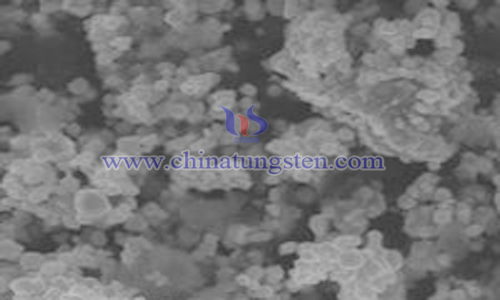Tungsten Oxide Nanometer Gas Sensing Materials Preparation with Multiple Surface Defects
- Details
- Category: Tungsten Information
- Published on Saturday, 03 August 2019 22:58
In the field of semiconductor gas sensitive materials, tungsten oxide (WO3) has become the research focus of nano gas sensitive materials in recent years because of its easy regulation, strong selectivity, good stability, high sensitivity and low gas sensitive working temperature.

Oxygen holes on WO3 surface can be used as electron donors of conduction bands, thus making the material n-type semiconductor. Therefore, in practical applications, the gas sensing properties of tungsten oxide nanomaterials can be improved by increasing their specific surface area and surface defects.
In order to overcome the shortcomings of the existing technology, some scholars have proposed a preparation method of tungsten oxide nanometer gas sensing materials with multi-surface defects. Its characteristics include the following steps:
1.Dissolve 2G tungsten hexachloride in 100ml 0 ~℃ absolute ethanol, stir it to dissolve completely by magnetic force, then slowly add 10ml deionized water, stir it at 0 ~℃ for 30 minutes, and then stir it in 50 ~℃ water bath for 24 hours.
2.Cooling the solution in step 1 at 0 ℃;
3.Dissolve 1 g of tungsten hexachloride in 10 ml 0 dehydrated ethanol, stir magnetically until all dissolved, and then pour into the solution described in step 2.
4.Transfer the solution prepared in step 3 to the reactor and seal it. Then place the reactor in the reactor and react at 180 ℃ for 12 hours, then cool it to room temperature.
5.The powder prepared in step 4 is centrifuged, washed and dried.
The obtained nano WO3 particles are elliptical nanoparticles with a rich defect structure on the surface, and a large amount of superoxide radicals on the surface thereof, which greatly enhances the gas sensing performance, and is dispersed and applied to the six-legged ceramic tube gas sensing test element. The gas-sensitive component test system was used to test the response to acetone gas. The test temperature was 180 ℃, and it was found to have a significant response to below 1 ppm, with good sensitivity and selectivity.



 sales@chinatungsten.com
sales@chinatungsten.com